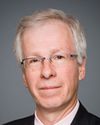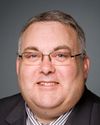This is a joke. If it accounts for rural long gun owners as well, you can drag that line across and see how you're doing there.
I wanted to follow up. I was going to let it go because I thought the Liberal opposition was moving off Mr. Garneau's suggestion of holding the cap at 308 seats. We heard the other day in testimony that it could be done. Today it was suggested that maybe it could be done, and numbers are floating out there, but we have yet to see any numbers that would, according to the Liberal opposition, allow us to change the seat composition, maintain the 308, and land us where we are now with the rough distribution.
By our calculations, we would see Quebec, for example, losing six seats, which could be done without a constitutional amendment. I believe the 75 seats is a legislative change, not a constitutional one. We would see Newfoundland lose a seat, we'd see Nova Scotia lose a seat, and we'd see Saskatchewan and Manitoba probably lose four seats each, for 16.
Like myself, you don't have exact numbers. What do you think the effect of this would be? Do you think this is a reasonable solution given that Saskatchewan and Manitoba would fall to 10 seats each, for example, which is the same as the number in New Brunswick and Nova Scotia, 10 each? The population in those two provinces is about half a million more, roughly, and those two provinces, of course, only have six senators and New Brunswick and Nova Scotia each have 10 senators.
What do you think the effects would be of this change if we were to keep the cap at 308 and make these changes that would see these provinces, including Quebec...which would lose its historic 75 seats and fall to perhaps 69?





